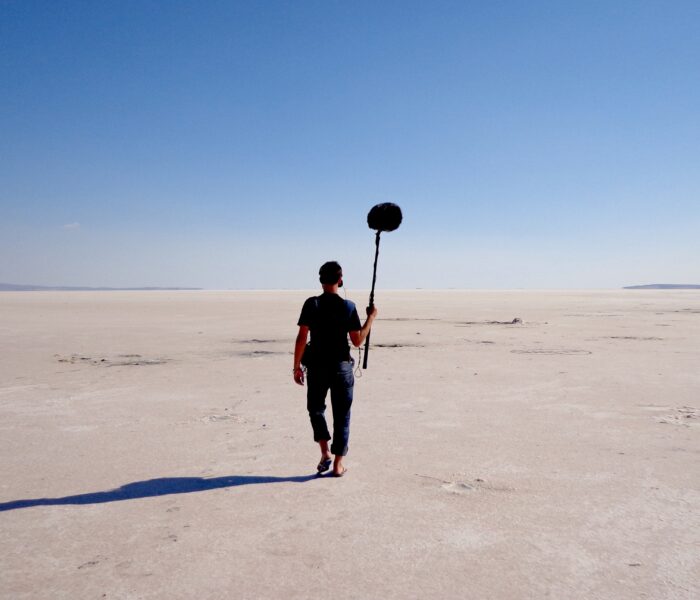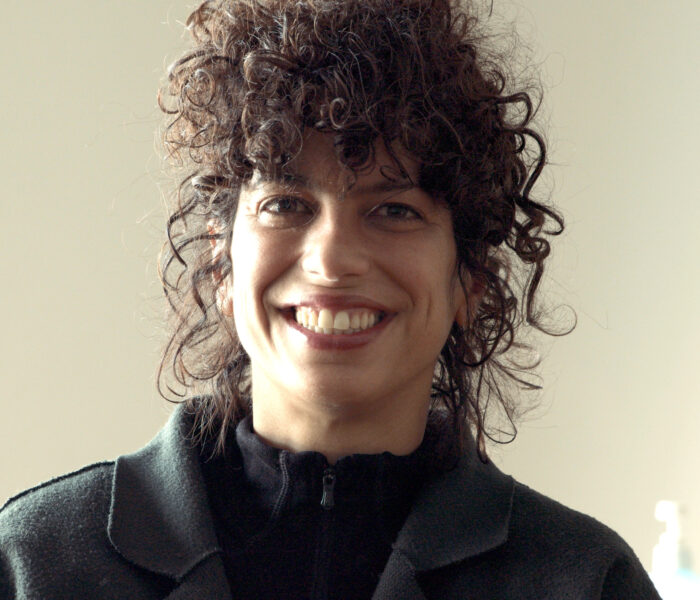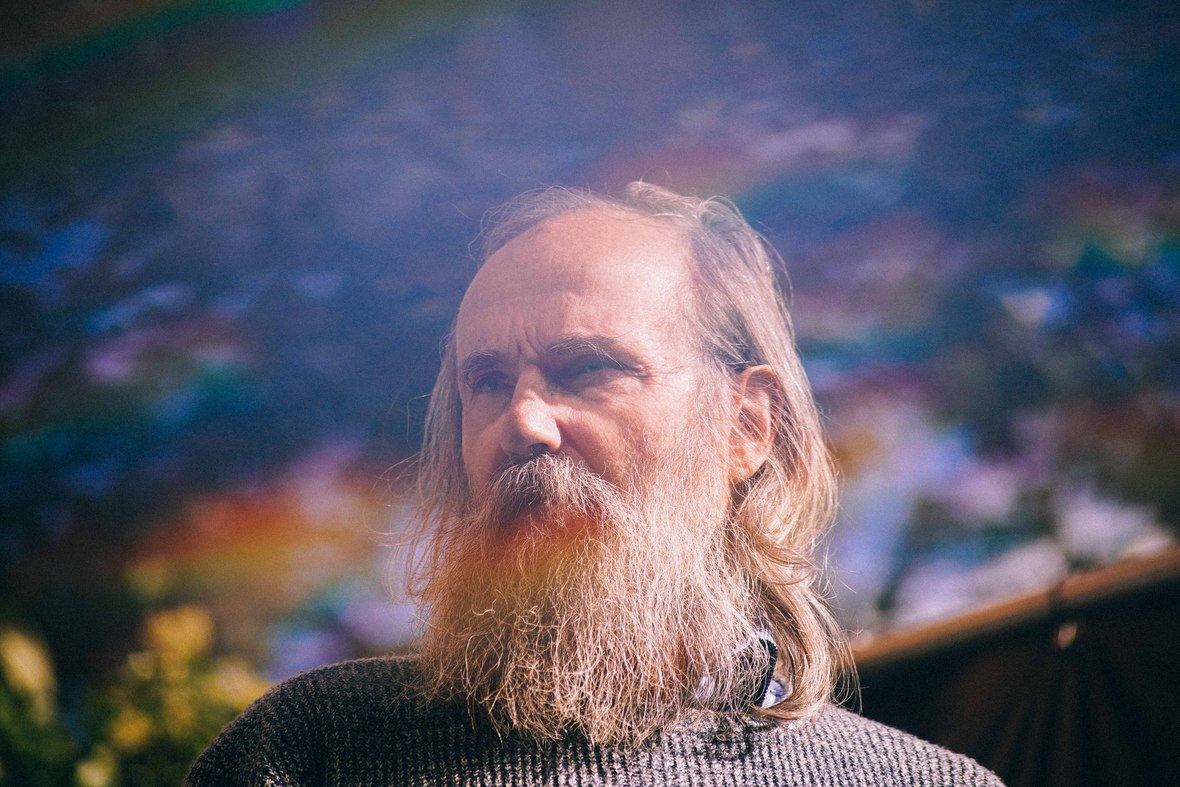La pianiste Vanessa Wagner est invitée à La Grave dans le cadre du festival Messiaen 2022 qui met à l’honneur Pascal Dusapin dont elle est l’interprète fétiche. Dans les jardins de l’hôtel Edelweiss, face au glacier de la Meije, elle revient pour nous sur les liens profonds tissés avec le compositeur et son univers pianistique et nous parle de son attachement pour la musique des minimalistes américains qu’elle ne cesse d’enregistrer et qu’elle joue en concert, seule ou en duo.
Vanessa Wagner, vous êtes une fidèle du festival Messiaen au Pays de la Meije qui fête cette année les trente ans de la mort du compositeur. Quelles sont les œuvres du Maître de La Grave que vous défendez particulièrement?
Je viens au festival depuis 2011, année où j’ai joué Scriabine, Murail, Debussy et trois des Études de Pascal Dusapin. J’y suis revenue régulièrement, tous les deux ans, avec plusieurs œuvres de Messiaen : le cycle vocal Harawi chanté par Karen Vourc’h, que nous avons beaucoup tourné et que j’adore, les Visions de l’Amen à deux pianos avec Marie Vermeulin, les Poème pour Mi… J’ai également à mon répertoire une dizaine de Regards sur l’Enfant Jésus, les Petites Esquisses d’oiseaux et la Fantaisie pour violon et piano qui a été donnée en début de cette édition 2022.
Vous ne jouerez pas la musique de Messiaen cette année mais deux pièces d’envergure de Pascal Dusapin dont vous avez assuré la création. Comment se fait la rencontre avec le compositeur?
Elle date de 1999 et s’est faite par l’intermédiaire du compositeur Eric Tanguy que je connaissais bien depuis nos études au conservatoire et qui était très proche de Pascal Dusapin ; je venais d’enregistrer un CD Scriabine chez Lyrinx qu’il a écouté et beaucoup aimé. S’est tissée à partir de là une très belle relation, amicale, durable et profonde, à tel point qu’il me considère aujourd’hui comme sa confidente! Pascal avait un rapport très conflictuel avec le piano qui ne figurait pas encore à son catalogue et notre rencontre lui a certainement permis de dépasser ce blocage et de renouer avec un instrument qu’il avait étudié, sans grand succès, dans son enfance. J’ai eu le bonheur de créer ses premières Etudes qui me sont dédiées, avec cette émotion toujours intense quand il s’agit de donner vie à une musique qui n’a jamais été entendue.
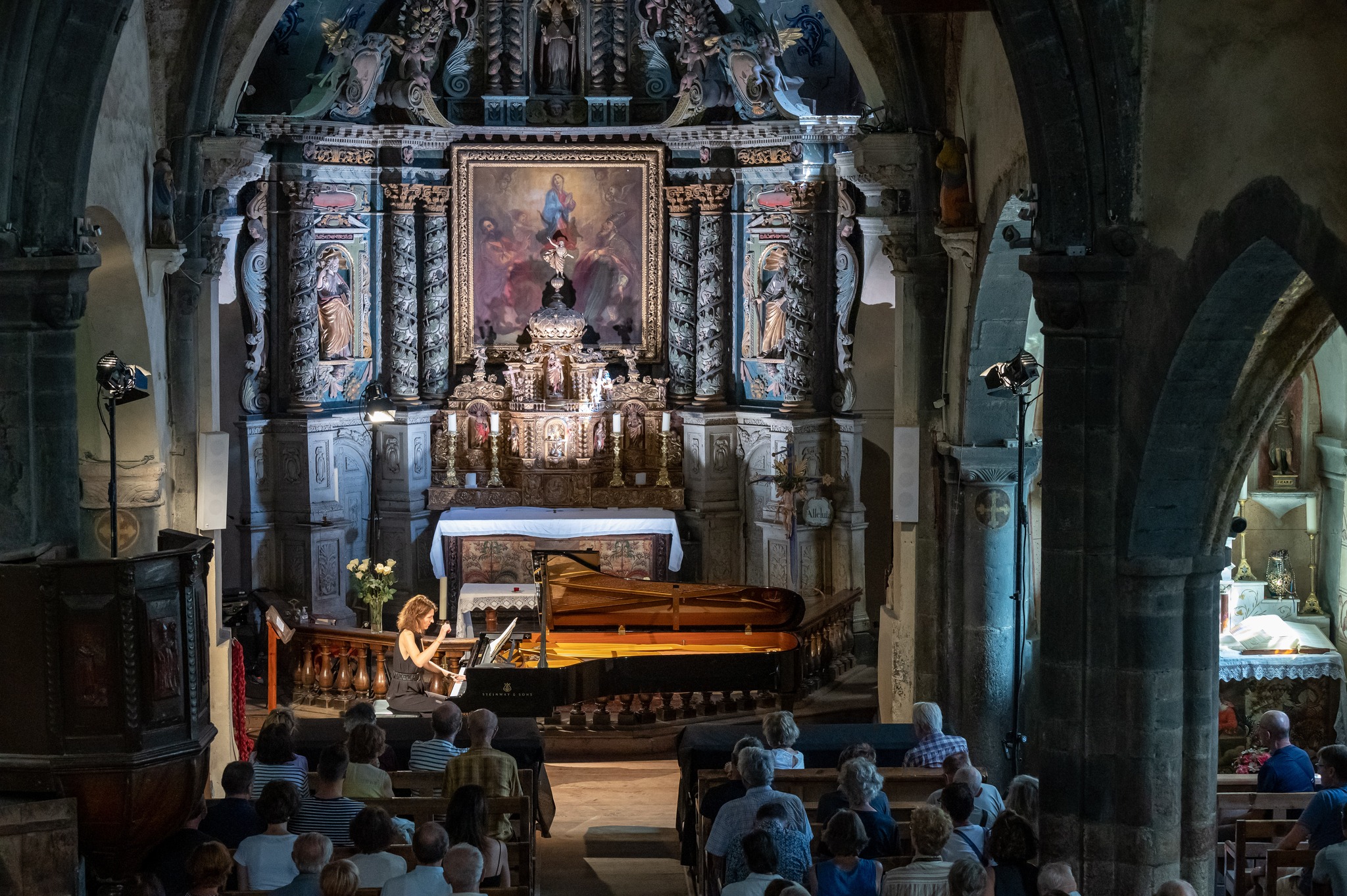
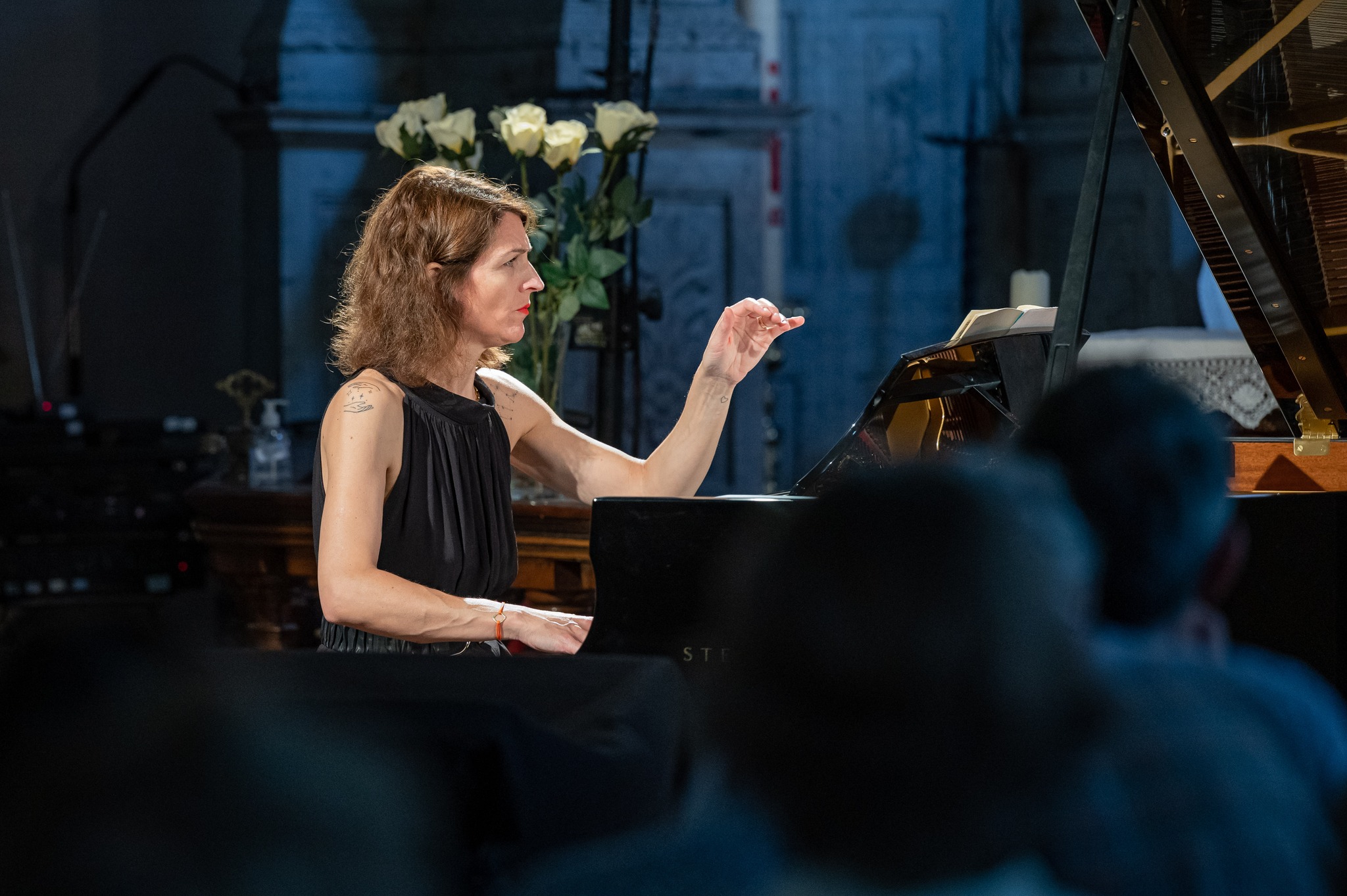
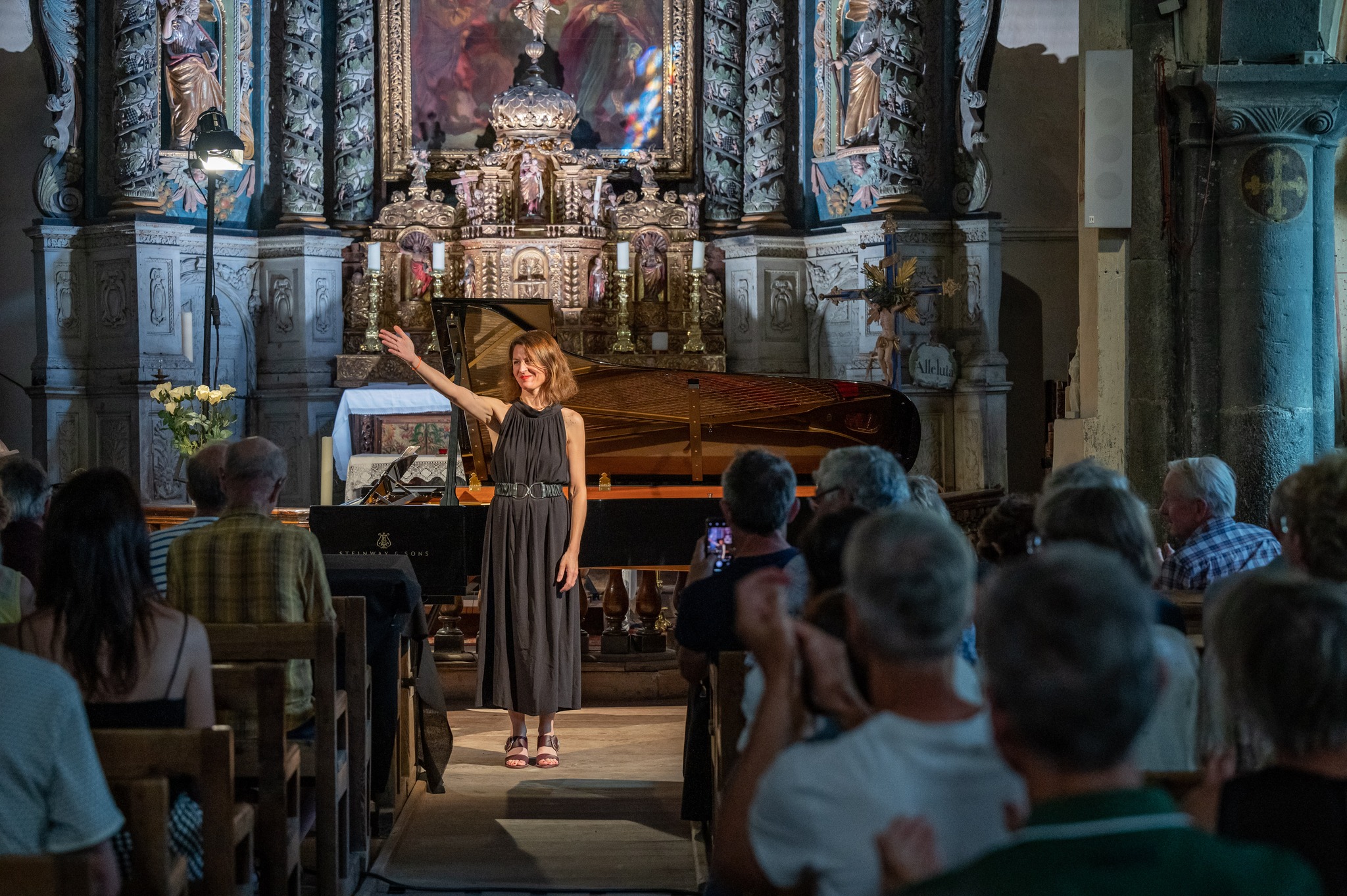
Le lien est tout à la fois intime et professionnel!
La dimension humaine compte en effet beaucoup dans nos rapports d’interprète à compositeur. Je dois dire que je suis rentrée dans son univers sonore quasi instinctivement et que je ressens assez fortement sa musique en vertu de ce qui nous lie dans la vie, ce socle de « grosse mélancolie » qui nous rapproche et que j’assume totalement.
Aviez-vous déjà l’expérience du monde contemporain avant de vous pencher sur ses partitions?
Je m’intéressais déjà à la création, avec ce désir d’échapper à l’institution du conservatoire où j’ai beaucoup souffert de l’enseignement académique. Je m’étais mise à écouter Stockhausen, Xenakis, Grisey, Berio, autant de compositeurs absents de mon enseignement que j’avais à cœur de découvrir. La rencontre avec les compositeurs vivants comme Eric Tanguy, François Sarhan m’a beaucoup stimulée ; celle de Pascal Dusapin a été déterminante.
Vous jouez ce soir, dans l’église de La Salle-Les-Alpes, l’intégrale des Sept Études pour piano. C’est une interprétation que vous mûrissez depuis un certain temps, une musique que vous vous êtes totalement appropriée…
La musique de Pascal est habitée d’une mélancolie très profonde mais qui n’est pas du désespoir ; dans les Sept Études, il se conforme au genre qui sous-entend une recherche dans l’écriture et une certaine virtuosité : il y en a trois qui sont particulièrement aventureuses dont une très difficile. Elles sont reliées au grand cycle d’études du XXᵉ voire du XIXᵉ siècle, où il a voulu éprouver les capacités techniques et digitales de l’interprète même si cela ne va pas aussi loin que chez Ligeti. Le propos n’est pas le même dans Ô Mensch! où il dépouille au maximum l’écriture en donnant au texte toute son importance. J’ai créé la première Étude en 1999 aux Bouffes du Nord puis les numéros 3 et 7 ; mais je préfère les jouer dans leur intégralité, selon la dramaturgie qu’elle dessine et les ramifications harmoniques que je continue à découvrir au fil des concerts, sans craindre aujourd’hui de côtoyer le silence et la résonance. Plus je joue cette musique, plus j’essaie de retrouver la souplesse et le naturel qui la rapprochent de l’improvisation, même si tout y est précisément noté. Je garde en mémoire cette remarque qui m’avait beaucoup touchée d’Henri Dutilleux me disant que je faisais vivre cette musique « entre les notes ». Elle m’a inspiré le titre de mon dernier CD Study of the Invisible. Dans l’écriture de Dusapin, la façon de tenir le discours et d’être habitée par chaque note et chaque espace est extrêmement important pour restituer le flux intérieur du discours.
Comment pourrait-on définir au mieux cette écriture de piano?
À mon sens, et après avoir beaucoup travaillé avec des chanteurs, je dirais que Pascal écrit pour le piano comme pour la voix, demandant à l’instrumentiste de retrouver le souffle du chanteur ; je pense que sa musique est au plus fort de l’expression lorsque le piano est oublié.
Ô Mensch!, également à l’affiche du festival, est une autre aventure avec le baryton Georg Nigl pour lequel Pascal Dusapin a déjà écrit quatre opéras : l’écriture de piano reste-t-elle la même?
À l’instar du Voyage d’hiver de Schubert auquel la pièce fait indéniablement penser, Ô Mensch! est un voyage existentiel très profond et très désespéré ; les textes de Nietzsche, d’une toute autre teneur que ceux de Müller, ont été sélectionnés par Pascal Dusapin et pourraient presque constituer une sorte de portrait intime du compositeur. L’œuvre a été créée aux Bouffes du Nord en 2011 par Georg Nigl et la mise en scène de Pascal, incluait scénographie, vidéo et électronique. La rencontre artistique avec Nigl, artiste d’un charisme extraordinaire, a été plus que positive ; nous avons ensemble gravé la pièce chez Col legno.
Mais j’ai beaucoup de plaisir aujourd’hui à reprendre la partition avec le baryton australien Mitch Riley dont la personnalité, le physique et la voix diffèrent totalement de celle de Georg. Il a, lui aussi, conçu une mise en scène dans la version donnée à Sidney, avec son propre pianiste. Son appropriation du texte et sa manière habitée, quasi expressionniste, est d’une telle intensité que je me suis laissée embarquée dans sa vision des choses, tout en apportant cette touche de mélancolie, d’intimité, à un univers chez lui très théâtralisé. Quant à l’écriture de piano, elle relève d’un travail harmonique fouillé et d’une dimension du timbre et de la texture sonore qu’il incombe à l’interprète de mettre en valeur. Il faut chercher la manière de faire sonner les accords, de modeler le son et d’animer une matière dans ses infimes variations.
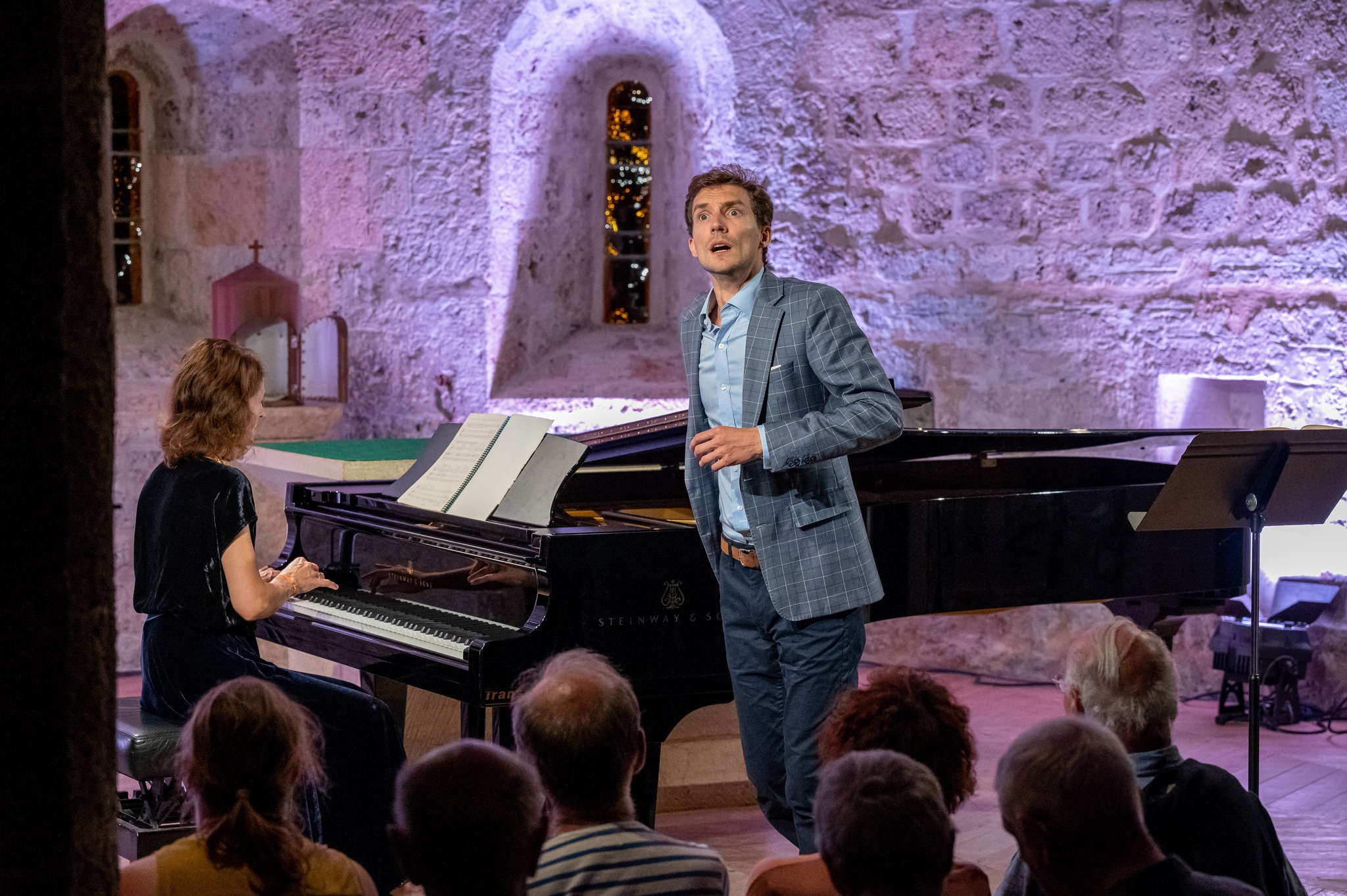
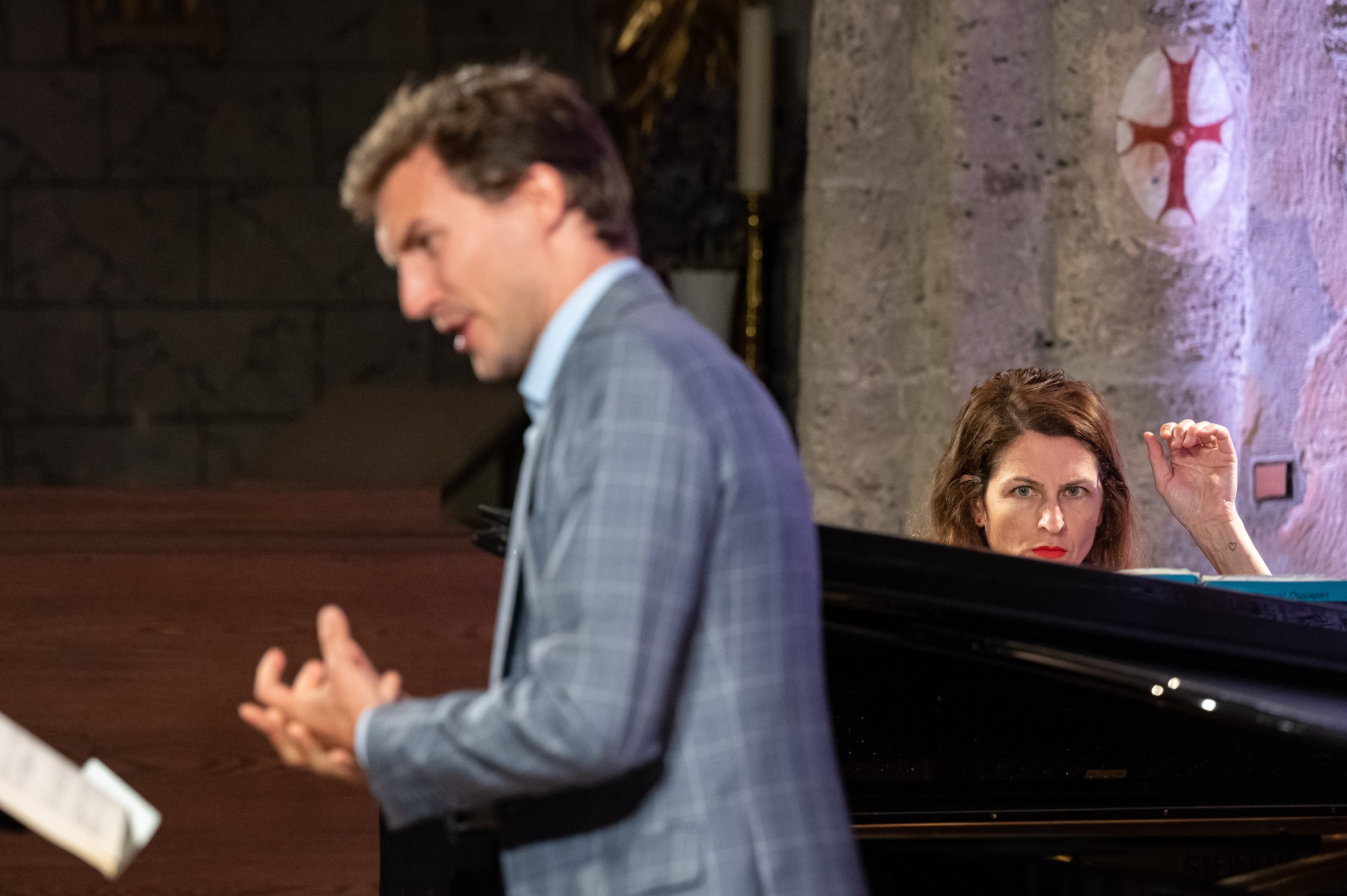
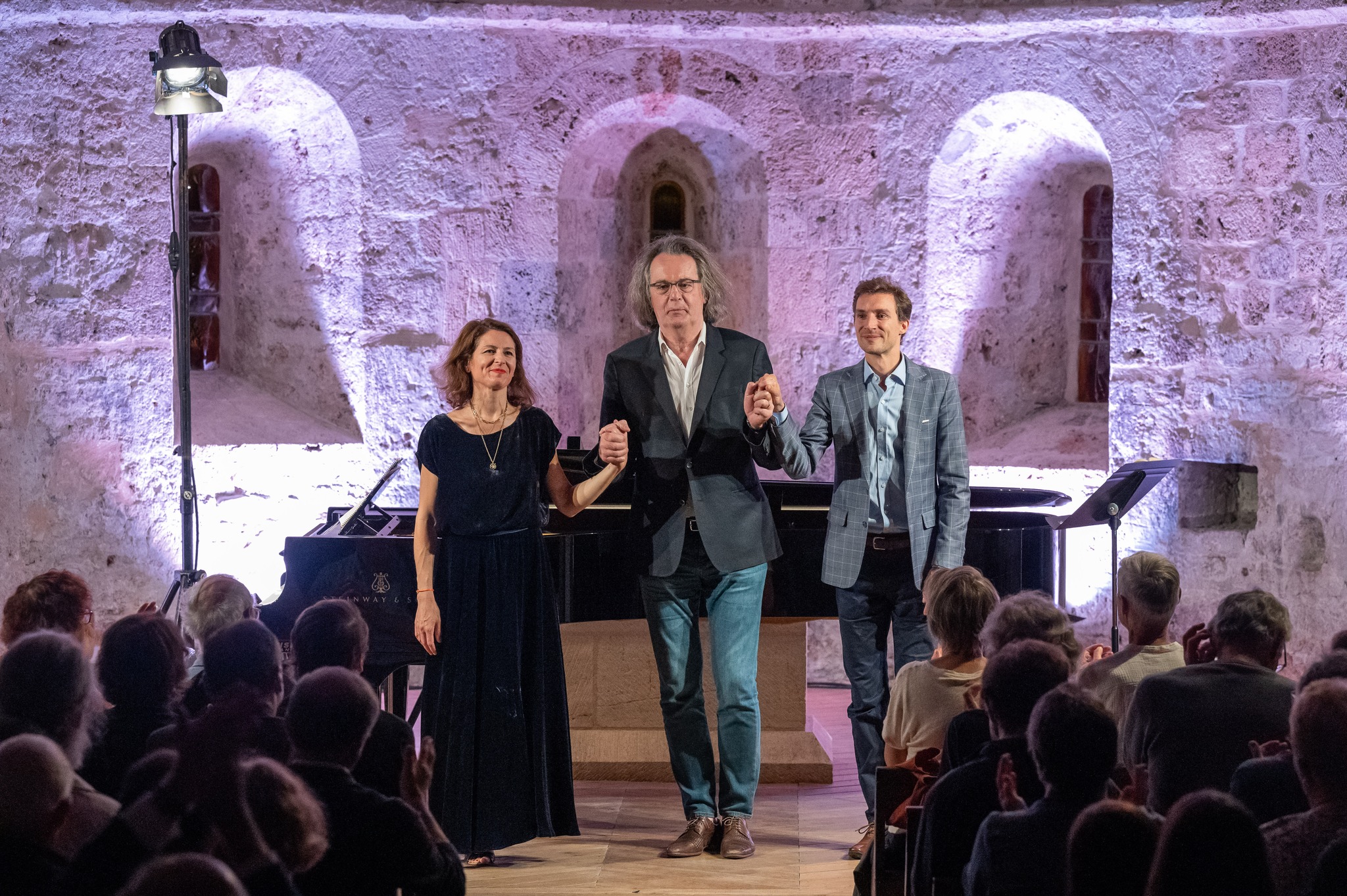
J’aimerais à présent que l’on parle de votre incursion dans la musique des minimalistes américains, une approche assez récente, somme toute, et une écriture à laquelle vous donnez une nouvelle lumière, une jubilation inédite…
J’ai abordé ce nouveau répertoire en 2016, année de la sortie de l’album Statea, rencontre du piano acoustique avec l’électronique du Mexicain Fernando Corona Murcof ; je n’ai jamais caché mon intérêt pour les musiques électroniques sophistiquées mais j’ai mis assez longtemps à concevoir un projet avec elles ; je redoutais les réactions de mon environnement professionnel! C’est un disque qui a bien marché et a marqué un tournant dans ma carrière : je voulais confronter mon rôle d’interprète jouant John Cage, Philip Glass, Morton Feldman, György Ligeti, Valentin Sylvestrov, John Adams à une autre manière d’appréhender le son comme sait le faire Murcof, avec un dispositif électronique relativement simple. J’ai commencé à jouer la musique des minimalistes à cette époque, même si je la connaissais depuis bien longtemps – j’adorais Einstein on the Beach! -, alors qu’elle était encore bien méprisée en France. Pour mon premier CD en solo, Inland, je suis allée chercher des partitions moins connues comme celles de Moondog, Emilie Levienaise-Farrouch ou encore William Susman.
Vanessa Wagner, votre deuxième album, This is America, encensé par la critique, est un franc succès!
Il est à deux pianos, avec Wilhem Latchoumia, un alter ego en matière de toucher et de sensibilité artistique. Je rêvais depuis longtemps de jouer Piano Phase de Steve Reich pour deux pianos et nous lui avons associé d’autres musiques tout aussi frénétiques et jouissives telles que Four Mouvements de Philip Glass, les danses symphoniques de West Side Story et l’Hallelujah Junction de John Adams. Mon dernier disque Study of the Invisible poursuit cette investigation dans la mouvance minimaliste avec la jeune génération des Caroline Shaw, Bryce Dessner, Peter Garland, Peteris Vasks, David Lang que j’avais envie de faire découvrir au public français. J’espère avoir ouvert des portes sur cette musique qui peine à s’imposer dans l’hexagone ; le fait de l’avoir joué à La Roque-d’Anthéron est en soi une belle réussite.
Est-ce à dire que le répertoire américain occupe aujourd’hui une place prépondérante dans vos programmes?
Disons qu’il a une vraie place, mais je n’oublie pas les classiques. D’ailleurs je pense que les deux univers se nourrissent l’un l’autre. Les répétitifs américains m’ont fait prendre conscience d’une temporalité autre, ont ouvert mon jeu et modifié mon rapport au grand répertoire que j’aborde aujourd’hui de manière plus détendue. Je viens de jouer Grieg et Tchaïkovski avec la sensation de mieux m’écouter, de jouir du timbre dans les mouvements lents et d’y prendre un plaisir accru. Il y a quelque chose qui s’est épanoui dans mon jeu et contribue à me faire aimer plus intensément ce métier : en jouant tout à la fois Scriabine, Rachmaninov, Pärt, Dusapin et Glass, j’ai trouvé le chemin qui me convient, une libération salvatrice.
Propos recueillis par Michèle Tosi



)
